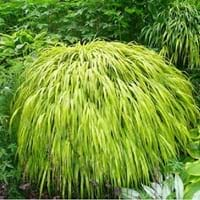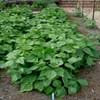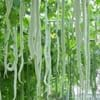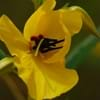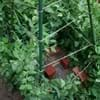Life Span
Annual
Perennial
Origin
Central America, South America
Japan
Types
Bush Beans, Pole Beans
Benikaze, Nicolas, All Gold, Albostriata
Habitat
Cultivated Beds
gardens, Shaded sites, Temperate Regions
USDA Hardiness Zone
Not Available
5-9
AHS Heat Zone
Not Available
9 - 5
Sunset Zone
A1, A2, A3, H1, H2, 1a, 1b, 2a, 2b, 3a, 3b, 4, 5, 6, 7, 8, 9, 10, 11, 12, 13, 14, 15, 16, 17, 18, 19, 20, 21, 22, 23, 24
1a, 1b, 2a, 2b, 3a, 3b, 4, 5, 6, 7, 8, 9, 10, 11, 12, 13, 14, 15, 16, 17, 18, 19, 20, 21, 22, 23, 24
Habit
Vining/Climbing
Clump-Forming
Flower Color
Lavender
Several shades of Green
Flower Color Modifier
Bicolor
Bicolor
Fruit Color
Purple
Non Fruiting Plant
Leaf Color in Spring
Green, Purple
Green, Lime Green
Leaf Color in Summer
Green
Light Green
Leaf Color in Fall
Green
Yellow, Red, Orange, Yellow green, Pink, Orange Red
Leaf Color in Winter
Not Available
Not Available
Leaf Shape
Oval
Long linear and narrow
Plant Season
Spring, Summer, Fall
Spring, Summer, Fall
Sunlight
Full Sun
Full Sun, Partial Sun, Partial shade
Type of Soil
Loam, Sand
Loam
The pH of Soil
Neutral, Alkaline
Acidic, Neutral
Soil Drainage
Well drained
Well drained
Bloom Time
Indeterminate
Late Summer, Early Fall, Fall
Tolerances
Drought
Not Available
Where to Plant?
Container, Ground, Pot
Container, Ground
How to Plant?
Seedlings
Divison
Plant Maintenance
Medium
Low
Watering Requirements
Do Not over Water, Requires regular watering, Water evenly
Average Water Needs, Requires regular watering
In Summer
Lots of watering
Lots of watering
In Spring
Moderate
Average Water
In Winter
Average Water
Average Water
Soil pH
Neutral, Alkaline
Acidic, Neutral
Soil Type
Loam, Sand
Loam
Soil Drainage Capacity
Well drained
Well drained
Sun Exposure
Full Sun
Full Sun, Partial Sun, Partial shade
Pruning
Remove damaged leaves, Remove dead branches, Remove dead leaves
Remove damaged leaves, Remove dead leaves
Fertilizers
5-10-10 fertilizer
fertilize in growing season
Pests and Diseases
Alternaria Leaf Spot, Anthracnose, Aphids, Armyworm, Bacterial Blight
Pests and diseases free, Red blotch
Plant Tolerance
Drought
Shade areas
Flowers
Showy
Insignificant
Flower Petal Number
Single
Single
Foliage Texture
Coarse
Medium
Foliage Sheen
Matte
Matte
Attracts
Not Available
Not Available
Allergy
no allergic reactions
no allergic reactions
Aesthetic Uses
Not Used For Aesthetic Purpose
Cottage Garden, Showy Purposes, Water gardening
Beauty Benefits
Beautiful Skin
No Beauty Benefits
Environmental Uses
Fixes Nitrogen
No fertilizer, pesticides, or herbicides needed
Medicinal Uses
Cancer, Diuretic, Homeopathy, Hypotensive, Miscellany
No Medicinal Use
Part of Plant Used
Leaves, Seedpod, Seeds
Not Available
Other Uses
Used for making brown dye, Used in biomass, Used in in reviving woollen fabrics
Not Available
Used As Indoor Plant
Yes
No
Used As Outdoor Plant
Yes
Yes
Garden Design
Container, Edible, Herb, Vegetable, Vine
Container, Edging, Mixed Border, Rock Garden / Wall
Botanical Name
PHASEOLUS vulgaris 'Purple King'
HAKONECHLOA macra
Common Name
String bean, Field bean, French bean
Hakone Grass
In Hindi
String Bean
hakone grass
In German
Bohne
Hakone Gras
In French
Haricot vert
Hakone herbe
In Spanish
String Bean
hierba Hakone
In Greek
Αμπελοφάσουλο
Hakone γρασίδι
In Portuguese
Feijão de corda
Hakone grama
In Polish
Fasolka szparagowa
Hakone trawa
In Latin
Gloria Bean
Hakone herba
Phylum
Magnoliophyta
Magnoliophyta
Class
Magnoliopsida
Liliopsida
Genus
Phaseolus
Hakonechloa
Clade
Angiosperms, Eudicots, Rosids
Angiosperms, Commelinids, Monocots
Tribe
Phaseoleae
Not Available
Subfamily
Faboideae
Not Available
Number of Species
Not Available
Not Available
Season and Care of String Bean and Hakone Grass
Season and care of String Bean and Hakone Grass is important to know. While considering everything about String Bean and Hakone Grass Care, growing season is an essential factor. String Bean season is Spring, Summer and Fall and Hakone Grass season is Spring, Summer and Fall. The type of soil for String Bean is Loam, Sand and for Hakone Grass is Loam while the PH of soil for String Bean is Neutral, Alkaline and for Hakone Grass is Acidic, Neutral.
String Bean and Hakone Grass Physical Information
String Bean and Hakone Grass physical information is very important for comparison. String Bean height is 210.00 cm and width 60.00 cm whereas Hakone Grass height is 30.50 cm and width 61.00 cm. The color specification of String Bean and Hakone Grass are as follows:
String Bean flower color: Lavender
String Bean leaf color: Green and Purple
Hakone Grass flower color: Several shades of Green
- Hakone Grass leaf color: Green and Lime Green
Care of String Bean and Hakone Grass
Care of String Bean and Hakone Grass include pruning, fertilizers, watering etc. String Bean pruning is done Remove damaged leaves, Remove dead branches and Remove dead leaves and Hakone Grass pruning is done Remove damaged leaves and Remove dead leaves. In summer String Bean needs Lots of watering and in winter, it needs Average Water. Whereas, in summer Hakone Grass needs Lots of watering and in winter, it needs Average Water.

